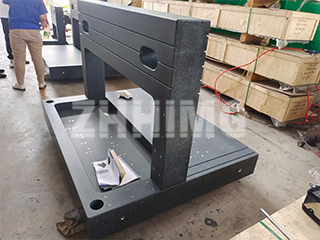When choosing a casting method for measuring plates, manufacturers often debate between sand casting and lost foam casting. Both techniques have unique advantages, but the best choice depends on your project’s requirements—whether you prioritize cost, precision, complexity, or production efficiency.
This guide compares sand casting and lost foam casting for measuring plates, helping you decide which method suits your needs.
1. Sand Casting for Measuring Plates
What is Sand Casting?
Sand casting is a traditional method where molten metal is poured into a sand mold to form a measuring plate. It’s widely used because of its low cost, versatility, and adaptability for both small and large-scale production12.
Advantages of Sand Casting
✔ Cost-Effective – Uses inexpensive materials (sand and clay), making it ideal for budget projects.
✔ Flexible Production – Suitable for single pieces, batches, or mass production.
✔ Wide Material Compatibility – Works with cast iron, steel, and non-ferrous alloys.
✔ Proven Reliability – A long-established method with predictable results.
Limitations of Sand Casting
✖ Lower Precision – Requires machining for tight tolerances.
✖ More Post-Processing – Produces flash and burrs, increasing cleanup time.
✖ Limited Complexity – Struggles with intricate designs compared to lost foam casting.
2. Lost Foam Casting for Measuring Plates
What is Lost Foam Casting?
Lost foam casting uses a foam model coated with refractory material, buried in dry sand, and then filled with molten metal. The foam vaporizes, leaving a precise, burr-free casting15.
Advantages of Lost Foam Casting
✔ High Precision – No parting lines or cores, reducing dimensional errors.
✔ Complex Geometries – Ideal for intricate designs (e.g., hollow structures, thin walls).
✔ Reduced Waste – Minimal machining needed, lowering material costs.
✔ Faster Production – No mold assembly required, speeding up lead times.
✔ Better Surface Finish – Smoother than sand casting, reducing post-processing.
✔ Eco-Friendly – Less sand waste and lower energy consumption.
Limitations of Lost Foam Casting
✖ Higher Initial Cost – Requires foam patterns and specialized equipment.
✖ Foam Model Sensitivity – Fragile patterns can deform if mishandled.
✖ Limited for Very Large Castings – Best for medium to large measuring plates.
3. Which is Better for Measuring Plates?
| Factor | Sand Casting | Lost Foam Casting |
|---|---|---|
| Cost | Lower | Higher initial cost |
| Precision | Moderate | High |
| Complexity | Limited | Excellent |
| Production Speed | Slower | Faster |
| Surface Finish | Rough | Smooth |
| Best For | Simple designs, low budgets | Complex shapes, high precision |
Final Recommendation:
- Choose sand casting if you need low-cost, simple measuring plates in large quantities.
- Opt for lost foam casting if you require high-precision, complex designs with minimal post-processing.
4. Why Global Buyers Prefer Lost Foam Casting?
Many international manufacturers now favor lost foam casting for measuring plates because:
✅ Reduces machining costs by up to 30%
✅ Improves dimensional accuracy for critical applications
✅ Shortens lead times compared to traditional methods
✅ Environmentally sustainable with less waste
Post time: Jul-31-2025

